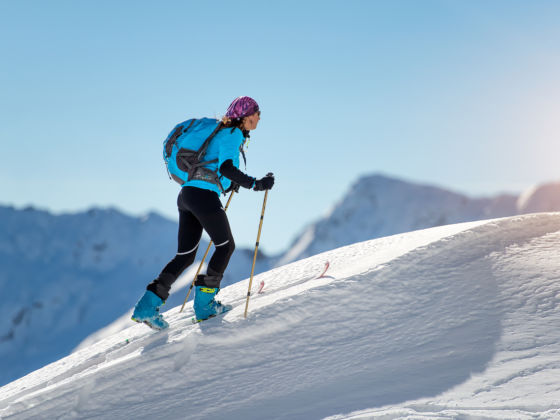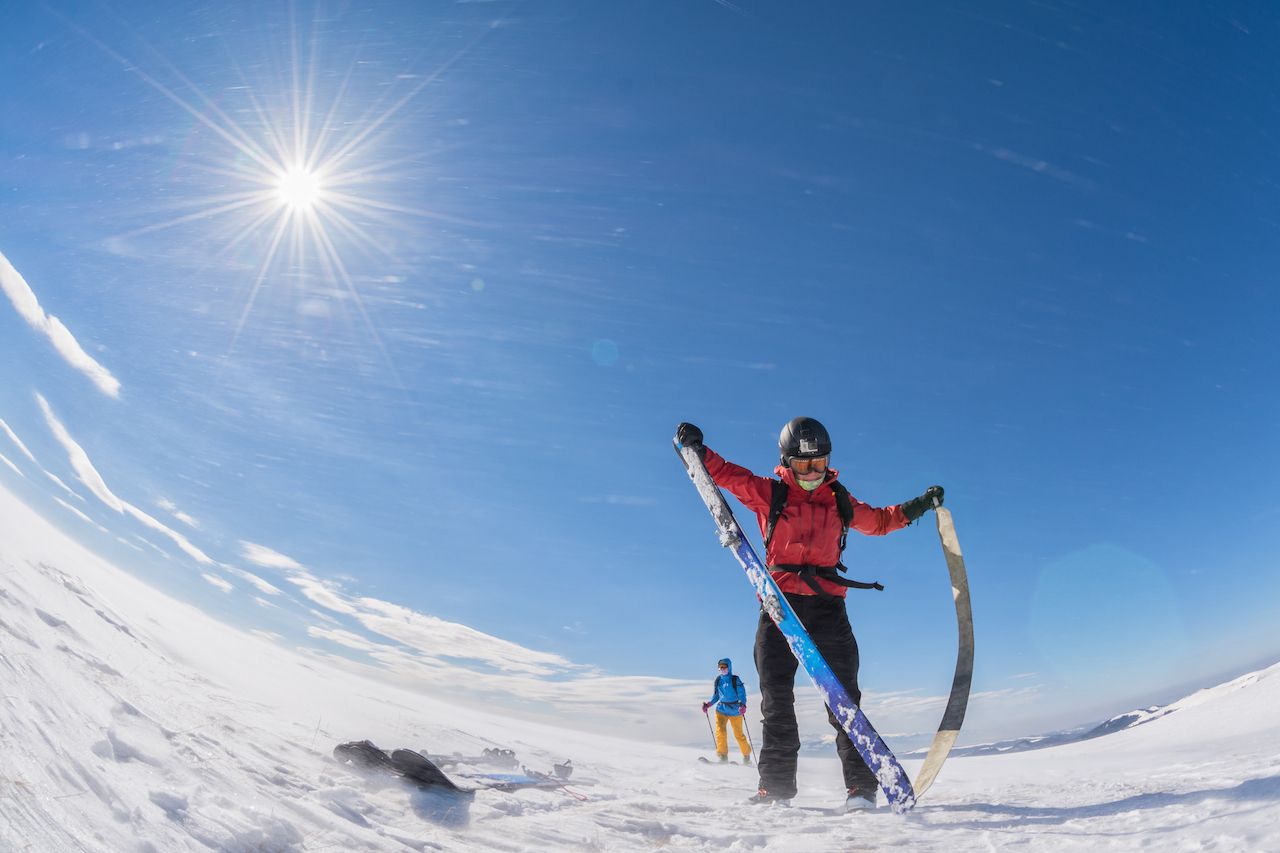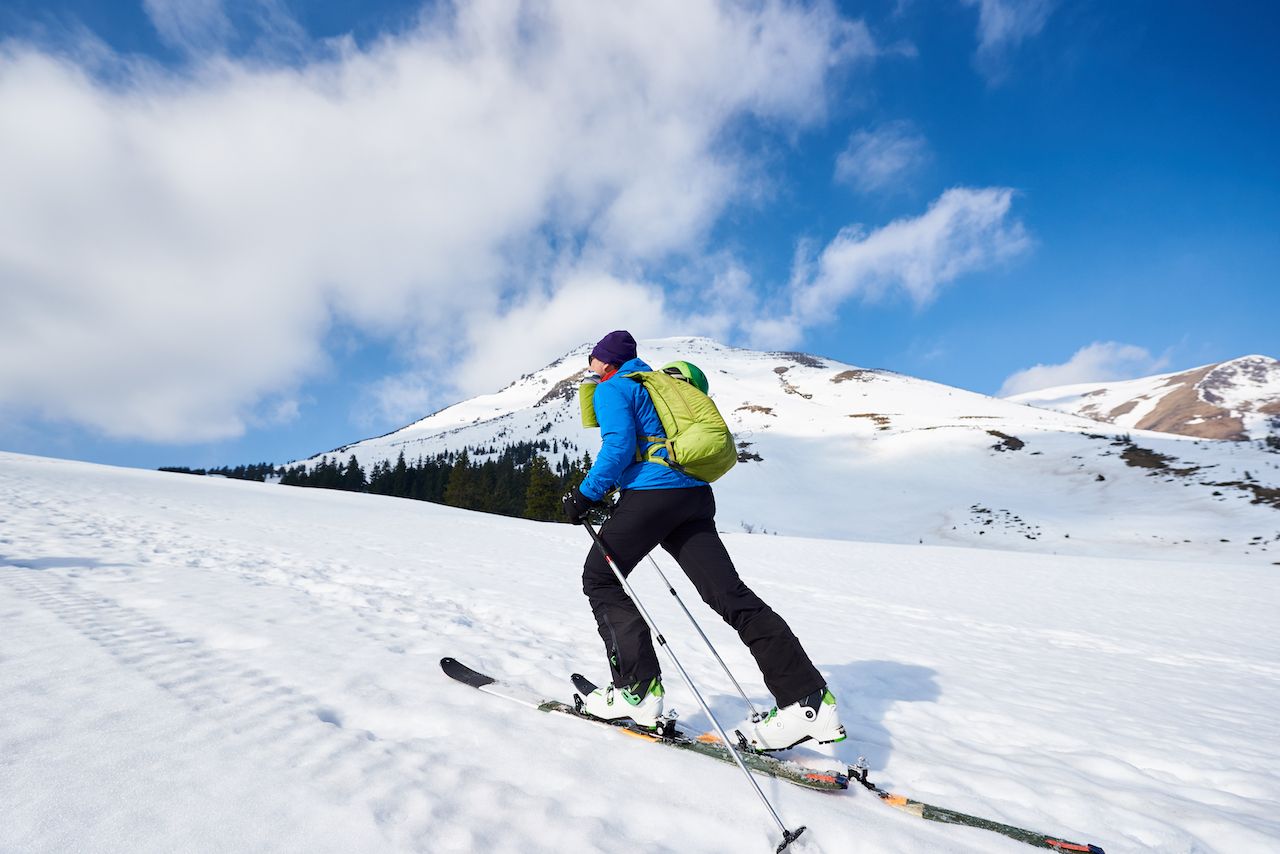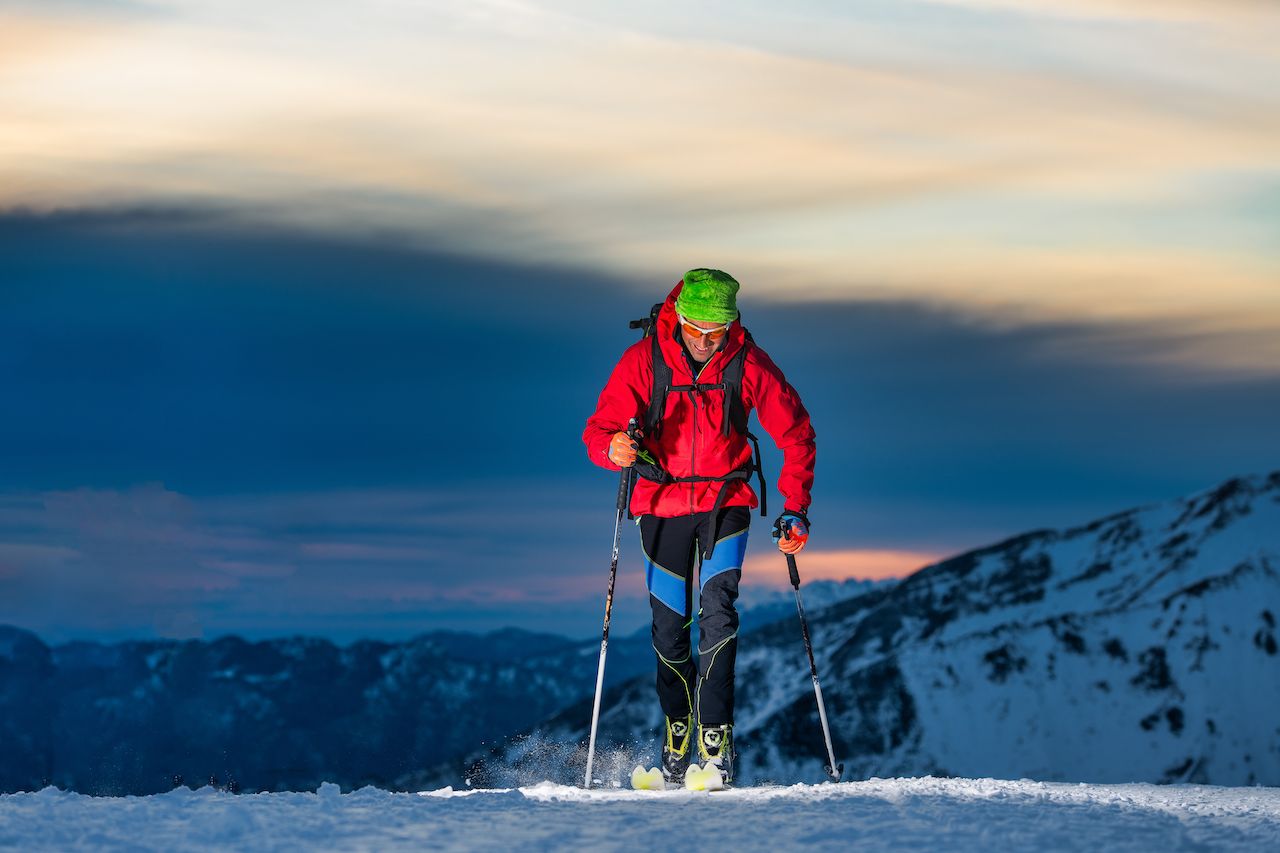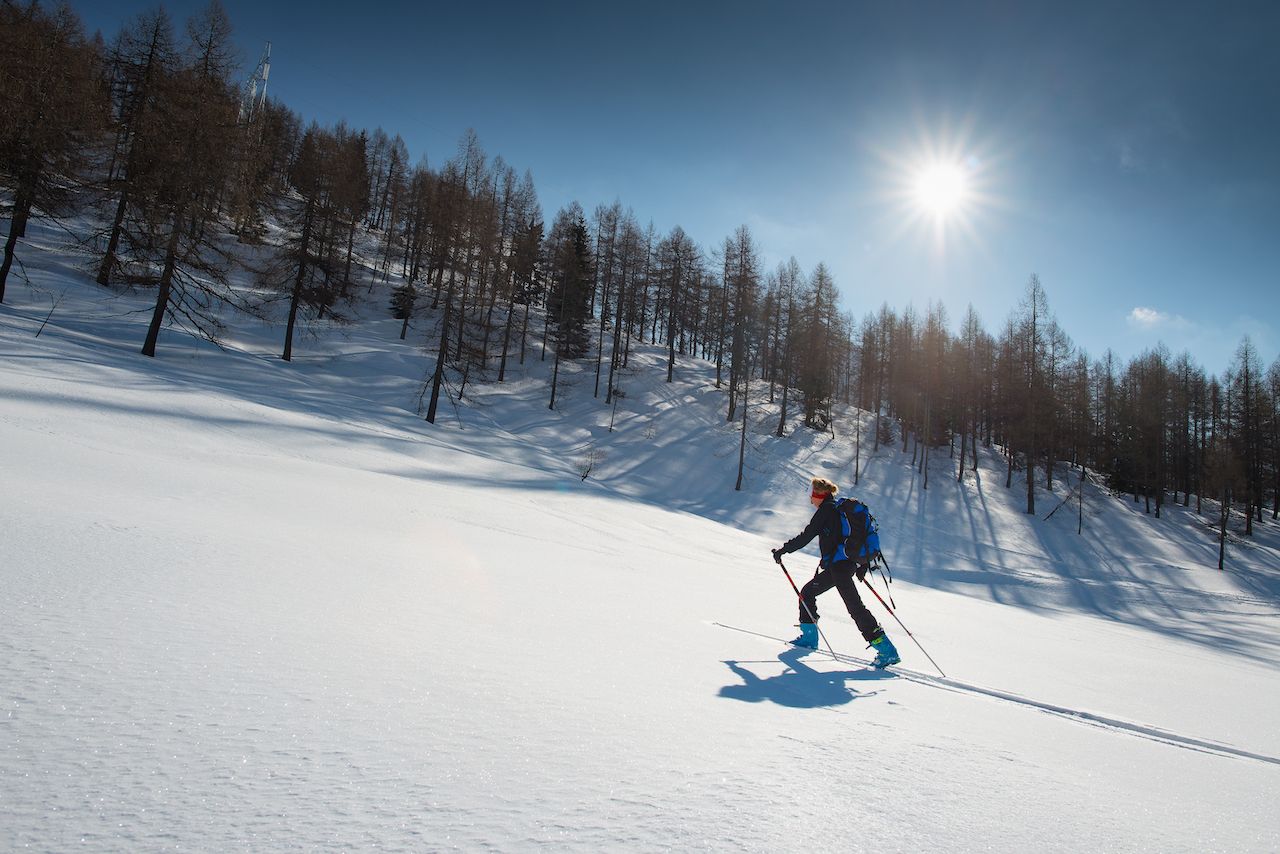If you’ve visited a ski resort in the last few years, you may have noticed signs stating “uphill access point” near the base. While riding the chair to your favorite runs, you might also have casually looked down at the skiers on the run below and noticed a few going against the grain — sliding, one foot in front of the other, up the hill — not schussing down it.
They’re actually doing this of their own volition, partaking in an activity called “skinning.” Those vested in the sport call it exercise. Many observing it for the first time call it “crazy.” But as ludicrous as this all may look as you soar overhead, the practice appears to be here to stay. Here’s the lowdown on skinning and how you can join in on the madness.
